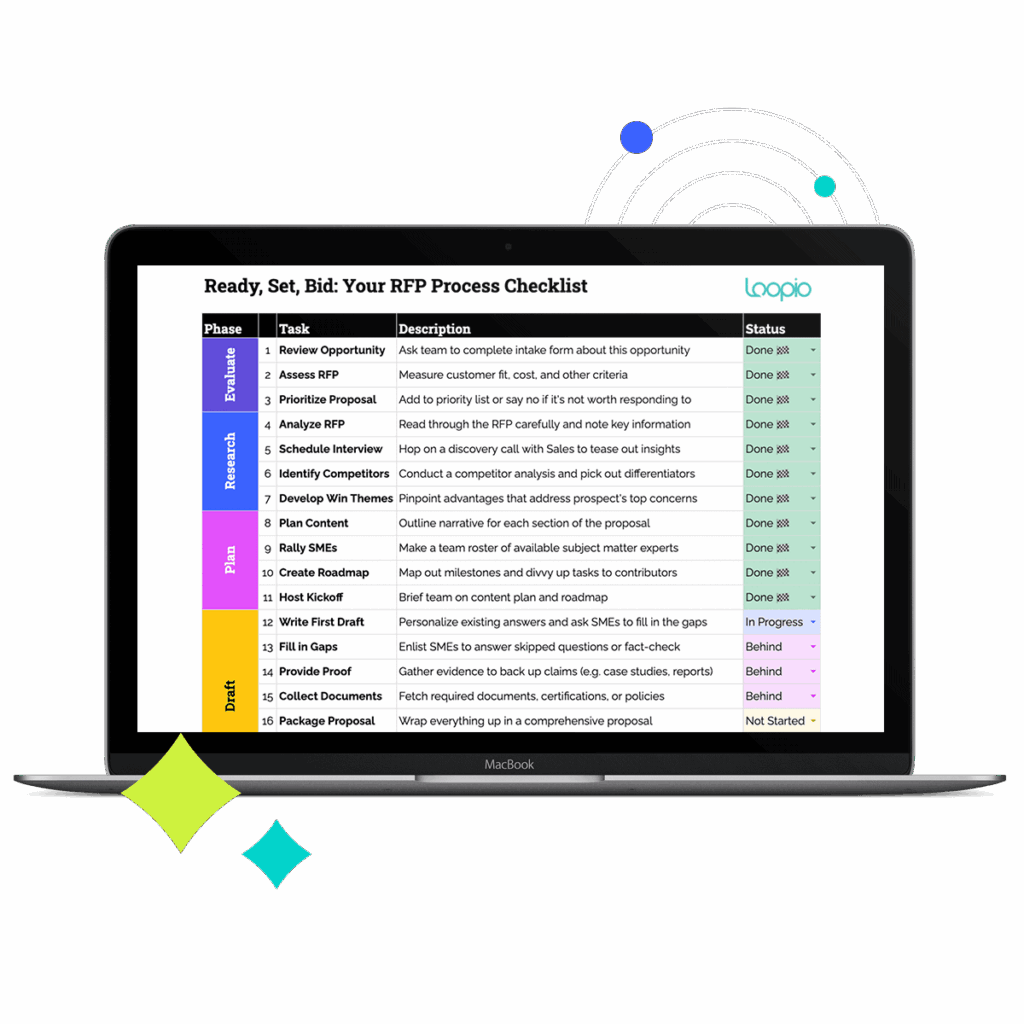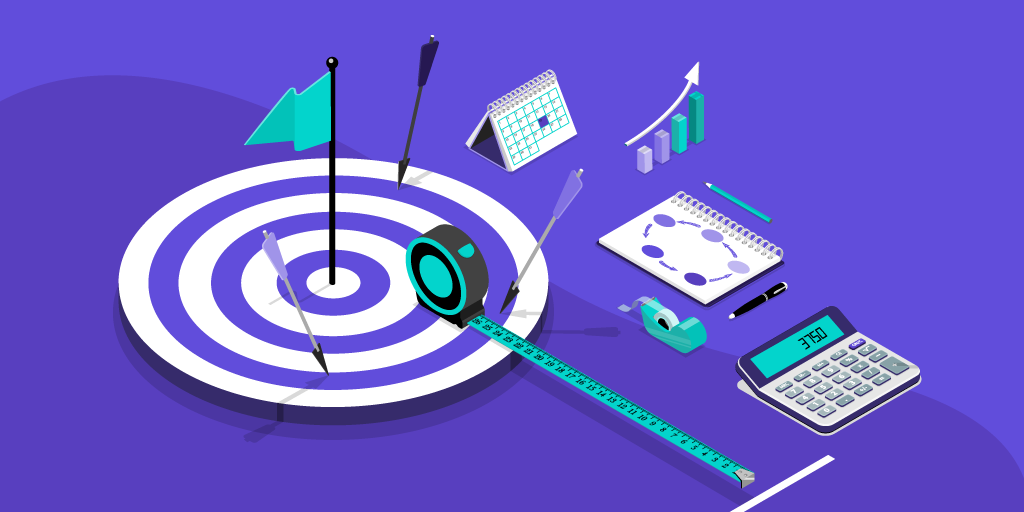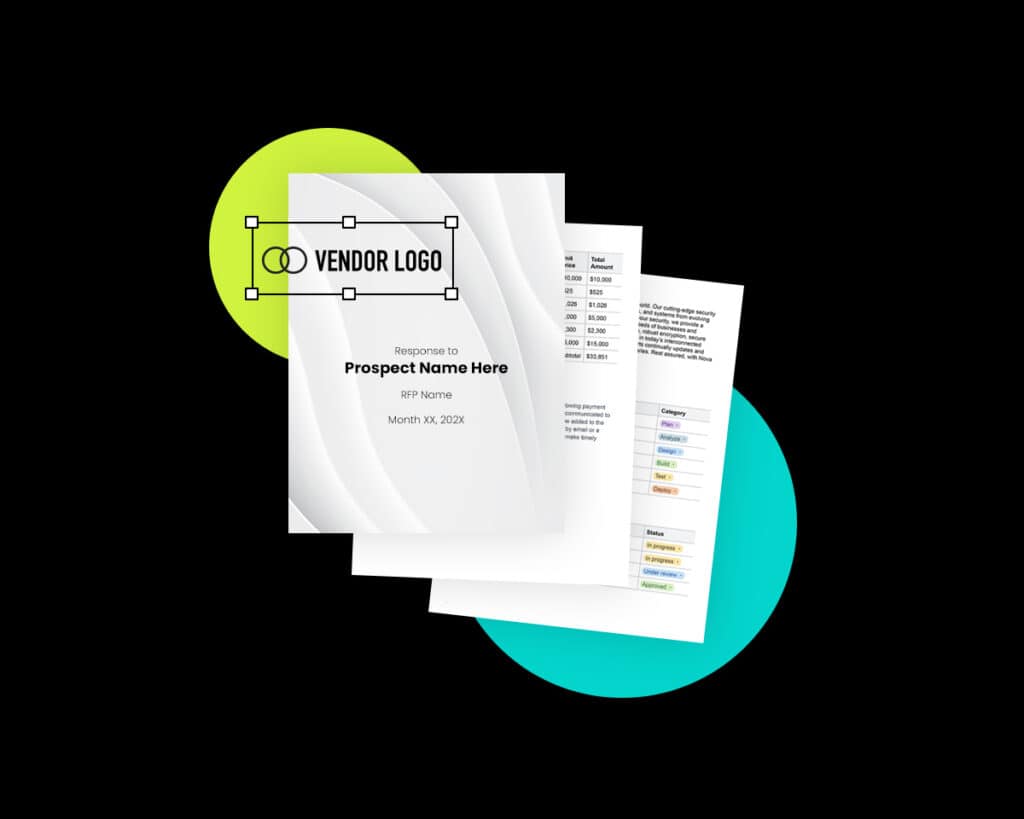RFP Checklist Template
Ready, Set, Bid: Your RFP Process Checklist
Never miss a step in your RFP response process again. Keep track of all the tasks needed to craft a compelling proposal.

Tackle All the Essential Steps Needed to Win With this Useful RFP Checklist Template.
Responding to a request for proposal is a marathon, not a sprint. Use this RFP checklist to break down your project into bite-sized tasks. Feel confident about completing every step along the way, from research to review to submission.
Whether you have an RFP response process or not, you can:
Follow an Ideal RFP Process Checklist
Provide all required documents with a proposal manager-approved checklist.
Outline Your Existing Response Process Steps
Track your average cost per bid (and where you’re getting the best ROI).
Reuse for Every RFP that Comes Your Way
Spot trends in win/loss research with insights from your proposal team or sales reps.
“Ensure that you define a process which allows flexibility when it is required. The ability to respond to a dynamic environment will be a critical component of your ability to produce responses with a high probability of wins. Flexibility must envelop your people, technologies, and procedures holistically.”

Download Your RFP Process Checklist
FAQs About RFP Checklists
An RFP checklist is a project management tool that helps you keep track of your proposal process and improve consistency.
The checklist breaks down the RFP process into easily manageable pieces. For example:
RFPs have five phases, and each phase has several tasks associated with it. For instance, an RFP starts in the Evaluation phase, where a proposal team should:
- Review the opportunity
- Asses the RFP
- Add it to a priority list if responding
The proposal then moves into the Research phase (which has its own set of tasks), and so on, until your team finally submits the RFP.
The checklist helps you assess the status of each task until you reach the finish line. With this visual template, you can better understand where you’re falling behind and where you’re ahead to ultimately meet your RFP deadline.
You can even repurpose the checklist for different requests (like RFIs, RFQs, and more) because there’s nothing more satisfying than completing a to-do list.
The 5 parts or phases of an RFP (as broken down in this checklist) are evaluate, research, plan, draft, and respond.
🤔 Evaluate: Consider whether this opportunity is the right fit for your business before investing valuable time, resources, and collective energy
📚 Research: Dig into every RFP detail to find nuggets of information that will help you understand who the prospect is and what needs are on their A-list.
🗓️ Plan: Map out your RFP response strategy by making a content plan based on your top advantages while kicking off the project with your team.
✍️ Draft: Craft a winning response by personalizing answers, enlisting the brainpower of SMEs, and packaging everything into an eye-catching proposal.
✅ Respond: Submit your response exactly as the delivery instructions say. Then, save your answers in a content library to repurpose for the next RFP.
The 4 overarching questions Jon Williams, UK Managing Director at Strategic Proposals, recommends asking are:
- Is it a real opportunity?
- Do you want it?
- Can you do it?
- Can you win it?
Before using this checklist process, it’s essential to implement a go/no-go decision tool. Having the answers to the essential questions above while examining other factors like competition, client relationship, timeline, and more, helps your team make informed decisions on whether or not to proceed with an RFP response.
Asking these questions ensures your team assesses customer fit before you begin the RFP process. A go/no-go process is an essential project management tool all proposal managers can benefit from. It helps your team capacity plan and prioritize incoming RFPs with confidence.


